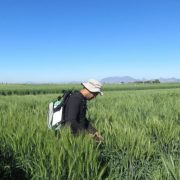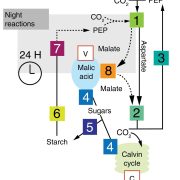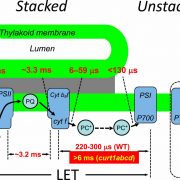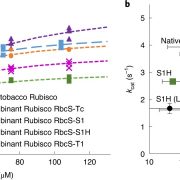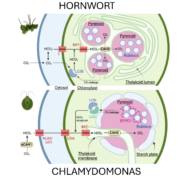Radical Information – Daily Stress and When the Light is Just Too Strong…
By Zechariah Haber and Shilo Rosenwasser, The Robert H. Smith Institute of Plant Sciences and Genetics in Agriculture, The Hebrew University of Jerusalem
Background: As sessile organisms, plants must continually sense and adapt to changing environmental conditions, with light intensity being one of the most critical factors affecting photosynthetic activity and biomass production. Numerous reactive oxygen species (ROS) are produced as a by-product of photosynthesis. Although high ROS levels are toxic and can damage essential biological molecules, low ROS levels have a regulatory role in photosynthetic adaptations to continually changing light conditions. However, we know relatively little about the production dynamics of ROS in photosynthesizing leaves, and this is mainly because measuring changes in ROS production in living plants is challenging. Here, we use a genetically encoded biosensor, roGFP2, which reports oxidative changes in GSH, a highly abundant cellular antioxidant. This allowed us to examine changes in ROS metabolism in Arabidopsis thaliana plants that were performing photosynthesis in normal light conditions vs. stressfully intense light conditions.
Questions: Can we nondestructively and continually quantify changes in ROS metabolism during the day and night in intact plants? How does light intensity affect these changes? What are the roles of key photoprotective proteins in shaping ROS metabolism dynamics?
Findings: To allow continuous in vivo measurements, we developed an automated microplate system that measures ROS biosensor signals throughout the day and night. This enabled us to quantify diurnal changes in ROS metabolism and to resolve the effect of high-light conditions. In addition, we discovered an unexpected link between changes in light intensity during the day and changes in ROS metabolism during the following night.
Next steps: Our findings emphasize the importance of continuous daily measurements of physiological parameters to reveal phenomena that would otherwise be overlooked. In our future research, we aim to address how additional environmental conditions affect diurnal patterns in ROS metabolism as we explore the role of different biological pathways in shaping these patterns.
Zechariah Haber, Nardy Lampl, Andreas J. Meyer, Einat Zelinger, Matanel Hipsch and Shilo Rosenwasser. (2021). Resolving diurnal dynamics of the chloroplastic glutathione redox state in Arabidopsis reveals its photosynthetically-derived oxidation. Plant Cell. https://doi.org/10.1093/plcell/koab068.



